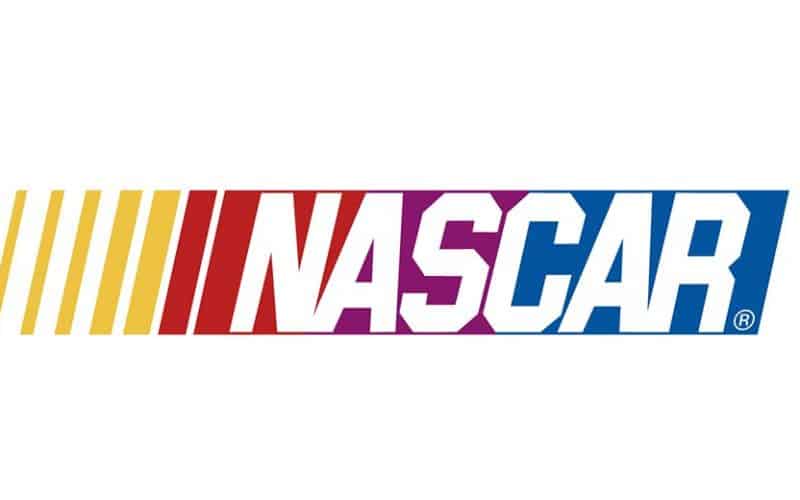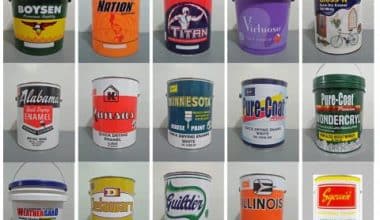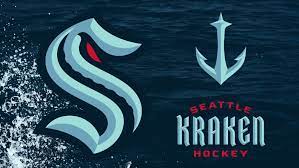NASCAR, a US corporate enterprise, is very important to the country’s auto-racing existence. The company, which was started in 1948, is in charge of sanctioning and running a wide range of racing events. Today, we’ll look at the history and evolution of the NASCAR logo, as well as the significance of the colors.
History and Significance of The NASCAR Logo
NASCAR racing is now one of the most popular sports in the United States. Since its inception at the end of the 1940s, the corporation has developed into a global organization that has sanctioned over a thousand vehicle races spanning nearly 50 countries on all continents. The firm oversees and runs endurance racing championships, in which drivers can race vehicles for 24 hours without stopping.
The cornering portions on the NASCAR course are strongly sloped toward the center to improve traction and prevent the car from going off the track at high speeds. This enables NASCAR race cars to maintain near-top speeds at all times. The highest average lap speed in NASCAR has been set at California Speedway, which has the highest average lap speed in motorsports at 388.537 km/h.
Evolution of The NASCAR Logo
1948 — 1955
The first NASCAR logo debuted in 1948 and remained with the company for nearly seven years. It was a stunning emblem with two black automobile silhouettes confronting each other in the center, set on a black background with two crossed rave flags in a red and white checkered pattern. The white arched ribbon with the prominent black “NASCAR” writing served as a bridge between the two vehicles. The whole message in black sans-serif characters was positioned in four layers above the ribbon, in the negative space between two flags.
1955 — 1963
The 1955 facelift introduced a new color to the NASCAR palette. It was framed by a wide yellow band that repeated the shape of a racing track (horizontally stretched oval) and was outlined in black from both the inside and outside. The two cars were painted red, and the flags were black and white. The flags were also relocated to the left and right sides of the upper yellow track framing. The text from the internal section of the logo was now put in a precise sans-serif font, while the “NASCAR International” wordmark was executed in a bold and modern typeface around the frame’s perimeter.
1964 — 1975
The NASCAR logo was modified again in 1964, this time in a gray and blue color palette with black lettering and accents. The gray automobiles with black outlines were put on a gray and black striped background, mimicking a car grille. The drags returned to their original position, but with the black and white palette from the previous version. The text was now positioned in white on two blue parts: “NASCAR” on top and “International” on the bottom, both arranged on an attractive blue ribbon accentuating the design.
1976 — 2016
The NASCAR logo, designed in 1976, featured a white wordmark on a four-color background (yellow, red, purple, and blue). For 40 years, the bar mark remained constant. Despite the fact that a new symbol was adopted in 2017, the old one is still used on lower NASCAR series badges.
The NASCAR Logo Today
In early 2016, the corporation began work on an entirely new logo. It made its debut in January 2017. The current NASCAR logo is similar to the previous one, although it has a more modern appearance. The angled bars have been shifted to the left, leaving the NASCAR logo on a white background. The purple bar has vanished.
Font of The NASCAR Logo
The company’s designers chose a simple sans-serif font for the new NASCAR logo. The characters are emphasized somewhat to convey the impression of speed.
Color of The NASCAR Logo
The NASCAR logo currently has four colors. The angled bars are yellow, red, and blue, and the rest of the symbol is black. The background is all white.
Overview of NASCAR
The National Association for Stock Car Auto Racing, or NASCAR, was created in 1948, while the origins of stock car racing may be traced back to the Prohibition era.
Drivers gathered in Daytona Beach, Florida, to compete in competitions to see which vehicles were the fastest. William “Bill” France Sr., a race competitor and businessman, realized the necessity to promote and sanction racing.
NASCAR has been a leader in producing and promoting races since its inception, and it has grown to become the world’s largest regulatory body for stock car racing.
NASCAR History
Daytona Beach was the popular location for speed record competitions throughout the 1920s and 1930s, with drivers racing over a 4.1-mile circuit that included a 1.5- to 2-mile stretch of beach as a straightaway and a beachfront highway as another section of the course.
Stock car racing stretches back to the 1920s, when Prohibition was in effect. Whisky and other alcoholic beverages were transported to the United States in small, fast vehicles. On the outside, normal-looking cars were modified for speed and agility, and many had flooring and seats removed to hold the bootlegged wine.
Stock car racing remained popular after Prohibition was lifted in 1933, and drivers continued to carry moonshine throughout the South. Cars became faster, which improved the racing scene in Daytona.
Due to the Great Depression, Bill France Sr. relocated to the area in 1935 and competed in the 1936 Daytona 500, finishing fifth. France first ran the course in 1938. In 1947, he met with other race promoters and racers to discuss the formation of a race-sanctioning body.
This conversation resulted in the establishment of NASCAR in 1948, with three divisions: modified, roadster, and strictly stock, though the roadster section was immediately discontinued owing to a lack of fan interest.
NASCAR’s First Race
The first NASCAR race, a Modified class race, was held on February 15, 1948, at the beach-road circuit in Daytona. While this was the first year that the firm held an event, most people remember 1949 as the year when the racing world changed forever.
The first NASCAR Strictly Stock Series race—the company’s first stock car race—took place on June 19, 1949, at Charlotte Speedway in North Carolina, in front of a crowd of roughly 13,000 people. The event consisted of 200 laps totaling 150 miles, with cars reaching high speeds of roughly 68 mph.
After Glenn Dunaway was disqualified for having improper rear springs placed on his 1947 Ford, Jim Roper, who participated in a 1949 Lincoln, was granted a first-place finish.
NASCAR Over the Years
What began as a modest group has grown into a popular and thriving sport. NASCAR now sanctions over 1,500 races throughout the world.
The company has reached numerous milestones. Among the highlights are:
- The Southern 500, NASCAR’s first 500-mile race, takes place at Darlington Raceway on September 4, 1950.
- The first Daytona 500 takes place on February 22, 1959, at the 2.5-mile Daytona International Speedway. Lee Petty is proclaimed the winner in front of almost 41,000 supporters.
- Wendell Scott becomes the first African American to win a race in NASCAR’s premier series on December 1, 1963.
- The Alabama International Speedway opens on September 14, 1969. Talladega Superspeedway is its current name.
- Buddy Baker becomes the first driver to reach 200 mph on March 24, 1970.
- The Daytona 500 is broadcast for the first time on Motor Racing Network (MRN) on February 14, 1971.
- Bill France Sr., the creator of NASCAR, transfers over control to his son, Bill France Jr., on January 10, 1972.
- Richard Petty wins his 200th race in the Firecracker 400 at Daytona International Speedway on July 4, 1984.
- The 1992 season finale at Atlanta Motor Speedway on November 15, 1992, is regarded as one of the most historic events in NASCAR history. Jeff Gordon competes in a premier series race for the first time, while Richard Petty competes in his final race.
- Fox, NBC, and Turner Sports all became NASCAR partners on November 11, 1999.
- Dale Earnhardt Sr. died in a final-lap incident at the Daytona 500 on February 18, 2001.
- The NASCAR Research and Development Center opens in Concord, North Carolina in January 2003.
- May 23, 2010: Bill France Sr., Bill France Jr., Richard Petty, Dale Earnhardt Sr., and Junior Johnson are inducted into the NASCAR Hall of Fame.
NASCAR Technical Institute offers specialized training.
If you have a passion for NASCAR and want to work in the world of motorsports, specialized training can help you better prepare for a career.
NASCAR Tech, in Mooresville, North Carolina, offers the NASCAR specialized training program. Students are taught the fundamentals of motorsports over the course of 15 weeks. They include engines, aerodynamics, fabrication, and pit crew essentials. Some students are even given the opportunity to develop engines that compete in NASCAR-sanctioned races.
NASCAR Tech is NASCAR’s premier educational provider and the only facility in the country that offers NASCAR-endorsed training. Students work with cutting-edge technology and learn from professors with a diverse range of industry experience, from engine builders to crew chiefs.
Students must complete some type of core automotive program training to be eligible for the NASCAR program.
Facts About NASCAR
#1. NASCAR’s history began in December 1947.
On December 14th, 1947, Bill France Sr., a mechanic and auto shop owner, called a meeting, and the idea for NASCAR was born. It was realized the next year, and France would become the sport’s first president and a driving factor in its expansion.
After taking over as CEO in 1972, his son, Bill France Jr., would push the National Association for Stock Car Auto Racing (or NASCAR) to new heights.
#2. According to NASCAR statistics, the inaugural “Strictly Stock” race was run in 1949.
Although the first NASCAR race was held in Daytona Beach, Florida, a year earlier, it was a modified division race. Official NASCAR-sanctioned races had to wait a little longer, and the first “strictly stock division” race was staged on June 19th, 1949, in front of 13,000 fans in Charlotte, NC.
Glenn Dunnaway won the race but was disqualified because his rear springs were illegal. Jim Roper was declared the winner and accepted the $2,000 reward.
#3. According to NASCAR facts and history, the first NASCAR-specific track opened in 1950.
The first races were held on existing tracks, but in 1950, the Darlington Raceway in South Carolina became the first track built just for NASCAR. Much more quickly followed.
#4. In 1959, the first Daytona 500 race was held.
The first Daytona 500 took place on February 22, 1959. The winner was determined by a photo finish after 61 hours. Lee Petty, Richard Petty’s father, was proclaimed the first winner of the Daytona 500.
The race now marks the beginning of the season and is the most well-known event on the calendar.
#5. According to NASCAR history, the first flag-to-flag live coverage occurred in 1979.
On February 18th, 1979, the Daytona 500 marked the debut of live race broadcasting and a watershed milestone in NASCAR’s Premier Series history. The race was broadcast on CBS, and it included Richard Petty narrowly avoiding an accident and a brawl between drivers in the infield grass.
#6. According to NASCAR statistics, Richard Petty is the most successful driver in NASCAR history.
He has won 200 races, which is nearly double the 105 victories of No. 2 David Pearson. Jeff Gordon ranks third on the all-time list, with “just” 93 victories.
Kyle Busch’s NASCAR stats are equally amazing, with 59 wins, in terms of records achieved by drivers who are currently active.
#7. Seven championships have been won by three drivers.
Many drivers competed, but only Richard Petty, Dale Earnhardt, and Jimmie Johnson have each won seven titles. Johnson’s seven championships include five titles in a row between 2006 and 2010.
#8. According to NASCAR records, Wendell Scott was the first African-American to win a race in 1963.
Wendell Scott defeated Buck Baker at the Jacksonville Speedway on December 1, 1963. He was the first African-American to win a race in NASCAR’s Premier Series.
#9. According to NASCAR driver statistics, Danica Patrick owns several female driver records.
Danica Patrick is the most well-known female NASCAR driver. When Danica Patrick became the first woman to win the Busch Pole Award for capturing the pole position at the 2013 Daytona 500, headlines like “Danica Patrick creates history” dominated the press. With seven top-10 results, Patrick retains the record for the most by a female driver.
Despite having highly successful races at the Atlanta Motor Speedway, the legendary Daytona Beach track, Charlotte Speedway, and other popular tracks, she has never won a NASCAR race.
#10. Dale Earnhardt’s death, one of the worst moments in NASCAR history, signaled a safety revolution.
Dale Earnhardt, a seven-time winner, died in a car accident at the Daytona 500 in 2001. That rocked the racing industry, and numerous reforms have occurred since to ensure that such a catastrophe does not occur again.
NASCAR’s study on safety standards was accelerated, and the major stock car sanctioning body devised a slew of changes to purpose-built race vehicles and safety equipment targeted at enhancing driver safety.
The HANS device (which protects the neck), the SAFER barrier, carbon seats, cockpit cocoons, data recorders to analyze every hit, and other devices were among them. What were the outcomes? Since then, there have been no fatalities.
#11. According to NASCAR statistics, Martinsville Speedway is the shortest course in the Cup Series.
Martinsville has the shortest track on the Cup Series schedule, measuring 526 miles. Since its debut in 1949, the Speedway has been the only one to host Cup Series events.
#12. The NASCAR Cup Series consists of 24 tracks.
The Cup Series has 24 tracks in total, with Charlotte Roval and International Speedway counted as separate tracks.
There are three more circuits for the Xfinity Series and three more for the Gander Trucks Series, for a total of 30 tracks used by NASCAR.
#13. The size and length of NASCAR tracks can vary greatly.
Not all tracks are the same, contrary to popular opinion. Short tracks are those that are less than one mile long, whereas speedways and intermediate tracks are those that are more than one mile long. Two tracks at Daytona and Talladega are referred to as “superspeedways” due to their size and speed regulations.
#14. The longest track, according to NASCAR’s statistics database, is Road America in Wisconsin.
The longest track on the current NASCAR calendar is Road America, near Elkhart Lake, Wisconsin. It’s a road course with a length of 4.048 miles.
#15. According to NASCAR driver numbers by track, Richard Petty has the most wins across different tracks.
Aside from the various accomplishments that earned him a spot in the inaugural NASCAR Hall of Fame class, he also owns the record for most wins at multiple tracks, including Daytona (10 wins), Martinsville (15 wins), Richmond (13), North Wilkesboro (15), and Rockingham (15).
#16. According to NASCAR attendance figures, the first race at Daytona International Speedway drew 41,000 spectators.
The famous track hosted its maiden race in 1959. The attendance was an incredible 41,000 fans.
#17. According to NASCAR fan demographics, approximately 6% of Hispanic and African-American persons are enthusiastic followers of the sport.
Among Hispanics, 6% consider themselves enthusiastic fans, while 26% consider themselves casual admirers. According to the most recent NASCAR fan data, 6% of African-Americans are ardent fans and 29% are casual fans.
#18. NASCAR attendance data reveal that the sport’s popularity is dwindling.
While the epidemic had a significant impact on all live sports, arranging stock car racing for record numbers was difficult even before the pandemic.
NASCAR attendance figures show that the sport has lost around half of its live attendance and TV viewership since its high in 2005, when it trailed behind the NFL and the Super Bowl.
No one knows for certain what caused the drop in interest, but changes to the cars, the current driver roster, and the fact that NASCAR became increasingly ad-ridden could all be potential factors.
#19. Women account for 38% of NASCAR fans, according to fan demographics.
The number of NASCAR fans in the United States is believed to be 65 million, with women accounting for 38% of the total.
#20. Richard Petty has numerous all-time NASCAR records, according to NASCAR history facts.
Richard Petty is widely regarded as the greatest driver of all time, akin to the Tom Brady of NASCAR. Among his accomplishments are:
- 200 victories
- 123 poles.
- 10 consecutive victories
- Most victories in a season: 27
- Most laps completed and led: 307,836 and 51,406 respectively.
#21. J.D. McDuffie had 653 races without a victory.
When we think about winless teams, we usually think of the Tampa Bay Buccaneers and their 26 straight losses, but that’s nothing compared to J.D. McDuffie. He began racing in 1963 and never won a single race during his nearly 30-year career.
#22. According to NASCAR racing statistics, the fastest qualifying lap ever had a speed of 212.809 mph.
Bill Elliott accomplished this feat in Talladega in 1987. The record may never be broken due to regulatory changes and the inclusion of restrictor plates.
#23. Jeff Gordon had the most straight starts (797) of any driver.
Jeff Gordon had the most consecutive starts (797) in his 23-year career). When compared to football players, he may be dubbed the Brett Favre of NASCAR.
Gordon also has the most all-time lead lap finishes (588), the most road course wins (9), and the most restrictor-plate wins (12).
#24. One of the most astounding NASCAR statistics is Ned Jarrett’s 14-lap victory at Darlington in 1965.
With so many close wins and photo finishes, the last time someone lapped a race was in 1994, making Jarrett’s 14-lap lead hard to understand and impossible to break.
#25. In NASCAR history, the most cars that have started a race is 82.
This one, too, requires a trip back in time. At the Southern 500 in 1951, 82 vehicles started the race, and pole-sitter Frank Mundy finished last, losing 81 positions, a record that would never be broken.
Controversies in NASCAR History
While Bill France Sr’s legacy continues to drive into the twenty-first century, supervising a handful of other programs in addition to the major three, it hasn’t been without criticism. With over 1,500 races sanctioned at over 100 race tracks across the United States and Canada, as well as select international sites, issues are unavoidable. Furthermore, any league’s youth is vulnerable to future generations, who bring new technology as well as sharpened skills and tactics to provide an advantage over the competition. Deception, disagreements, and debate are unavoidable when millions of money are at stake. Especially with the plethora of personalities who collide as much as their automobiles. Here are some of the controversies surrounding NASCAR:
#1. Gatorade Duel 2007
The 2007 Gatorade Duel was riddled with intrigue and controversy. Evernham Motorsports has docked 25 championship points, as well as a slew of other individual punishments to team members ranging from the crew chief to the drivers, for an unlawful modification. Similarly, Kenny Francis and Robbie Reiser were punished (50 championship points) for unlawful car modifications. Then, three days after the first round of qualifying, racing officials removed Bobby Kennedy, the competition director for Michael Waltrip Racing, and Michael Waltrip from the track.
The reason: for the second time, an unknown chemical was discovered in their car’s intake manifold! NASCAR confiscated Waltrip’s initial car, but the backup car contained the same scam. The first compromised manifold was discovered and replaced with a new one that also contained the same unknown chemical. MWR was penalized 100 championship points, and the aforementioned drivers were banned from racing. Overall, the 2007 Gatorade Duels produced one of the most contentious days in NASCAR history.
#2. Turner, Flock, and the Union That Wasn’t
In September of 1961, Curtis Turner and Tim Flock, both from Winston-Salem, North Carolina, and Atlanta, Georgia, were suspended from NASCAR by Bill France after attempting to unionize with their fellow drivers. The attempt to get their colleagues to join the Federation of Professional Athletes drove France to vehemently oppose the initiative, despite the fact that, as Real NASCAR author Daniel S. Pierce notes, Turner’s intention was to improve circumstances for its drivers.
Despite the fact that the majority of elite drivers at the time agreed to participate, France’s clout silenced both Turner and Flock. While they were banned, both were later reinstated after some time, and in memory of this union-busting occurrence, France stated: “After tonight’s race, no known union member can compete in a NASCAR race.” And if this isn’t tough enough, I’ll enforce it with a pistol.”
#3. Wendell Scott’s win-that-wasn’t-then in 1963
It was reported that promoters cringed at the prospect of Wendell Scott, a black driver from Danville, Virginia, kissing the white-skinned beauty queen in the winner’s circle. Perhaps it was for this reason that Scott’s victory in Jacksonville was completely overlooked, despite the fact that once post-race tallies were examined, Scott had two laps more than his crowned challenger, Buck Baker.
Four weeks later, before a race in Savannah, Georgia, Scott was pronounced the winner, and the first-place prize went to him. While some racegoers believe it was an honest mistake, given the circumstances, it’s difficult to believe anyone’s version of events other than the drivers, Scott and Baker. It should be noted that Baker never once challenged Scott’s victory.
#4. “The Itch” and the Richmond Scandal
Clint Bowyer’s “The Itch” maneuver on September 7, 2013, in Richmond, Virginia, will live on in the memories of NASCAR fans and critics for some time. Long story short, Bowyer’s pit crew chief Brian Pattie instructed him to itch his arm, which resulted in Bowyer spinning off and forcing a caution with only seven laps remaining.
This set in motion a chain of events that resulted in Bowyer’s teammate winning the race and knocking Jeff Gordon out of the Chase for the Sprint Cup. In short, Michael Waltrip Racing’s manipulation of the final regular season race in Richmond was one of the largest controversies to hit the auto-racing league, as it was an unnatural move to modify a race and the standings. It was one of the most unsportsmanlike moves in the history of the racing league.
#5. The Big Engine and Richard Petty
Many consider Petty’s huge ass engine, which was 31 cubic inches larger than the permitted size at 358, to be one of the biggest frauds in auto racing history. What was most shocking about the incident of October 9, 1983, was that NASCAR still claimed Petty won the race, with Bill France eschewing a statement that the winner at the time of fans leaving the track should be declared the winner so that spectators didn’t read about any significant changes or decisions in the media in the days that followed.
Furthermore, Petty’s powerful engine was not his only advantage. It was also discovered that Petty’s crew placed left-side tires on the right side, giving Petty—still NASCAR’s most successful driver—aa temporary advantage on the track. It should be noted that Petty was fined for his hornswoggling against his fellow drivers, but this is hardly a real punishment.
#6. Pollution and Emissions
With climate change becoming an increasingly pressing issue, NASCAR’s environmental impact has never been more scrutinized. As the drive toward electric or hybrid vehicles grows, NASCAR’s lack of United States Environmental Protection Agency standards is a blemish on the austere, anti-environmental sports franchise.
NASCAR, for example, does not employ catalytic converters, mufflers, or any other pollution control systems. Furthermore, fuel use and the burning of tons of rubber-made tires exacerbate NASCAR’s status as an uncontrolled institution outside the purview of the EPA. A billion-dollar racing enterprise should be expected to analyze the damage it is causing at some point.
#7. Decision-Making and Business Structure
At its core, this is contentious. In comparison to other major sports leagues, where owners and players split profits and negotiate contract terms, NASCAR is unique. The France family has held majority ownership of the auto racing league since its inception in the late 1940s.
As a result, the league offers little in the way of bargaining power, including removing a Speed Channel television show in exchange for its consistent criticism of NASCAR’s actions and dwindling viewership. If the frequent use of its “detrimental to NASCAR” rule isn’t enough of a representation of power abuse, the perceived unwillingness to apply certain safety standards should be. Putting the family’s financial line ahead of anything else indicates a level of contentious company structure and decision-making.
What is the significance of the company’s logo and colors in the company’s history and traditions?
The NASCAR logo and its colors hold a significant place in the company’s history and traditions. The logo represents the company’s values and image and is a symbol of its connection to its fans and supporters. The use of certain colors in the logo can also be significant, as they may reflect specific aspects of the company’s brand or culture.
What other logos does NASCAR use for its various products and services?
NASCAR uses different logos for various products and services within the company. These logos help to differentiate the various offerings and promote a consistent brand identity.
How has the NASCAR logo been used in advertising and promotional campaigns?
The NASCAR logo has been prominently featured in various advertising and promotional campaigns over the years. This has helped to build recognition and awareness for the company and its offerings, as well as to connect with fans and supporters.
How does NASCAR use its logo to connect with its fans?
NASCAR uses its logo to connect with its fans by incorporating it into various marketing initiatives and campaigns. The logo is a symbol of the company’s brand and values and is often used to create a sense of community and connection with fans.
What role does the NASCAR logo play in the company’s overall branding strategy?
The NASCAR logo is an important component of the company’s overall branding strategy. It is used to communicate the company’s values and image, as well as to differentiate the company from its competitors. The logo is also used to build recognition and awareness for the company and its offerings, and to connect with fans and supporters.
The NASCAR Logo: Conclusion
The NASCAR logo shows racing on different kinds of roads that are different sizes and have different levels of difficulty. alludes to flashy, fast cars racing on race circuits. The sign contains a lot of danger, movement, and abrupt and sharp bends.
Related Articles
- Concept Testing Methods: Overview & Real-life Examples
- Cash Accounting: Best Cash Accounting Methods In 2023 (+ Detailed Guide)
- MOST EXPENSIVE WATCH BRANDS: List of Most Expensive Watch Brands in the World
- GERMAN CAR BRANDS: The Most Reliable Brands in 2023 (Updated)
- PAY EQUITY: Importance of Pay Equity Policy






